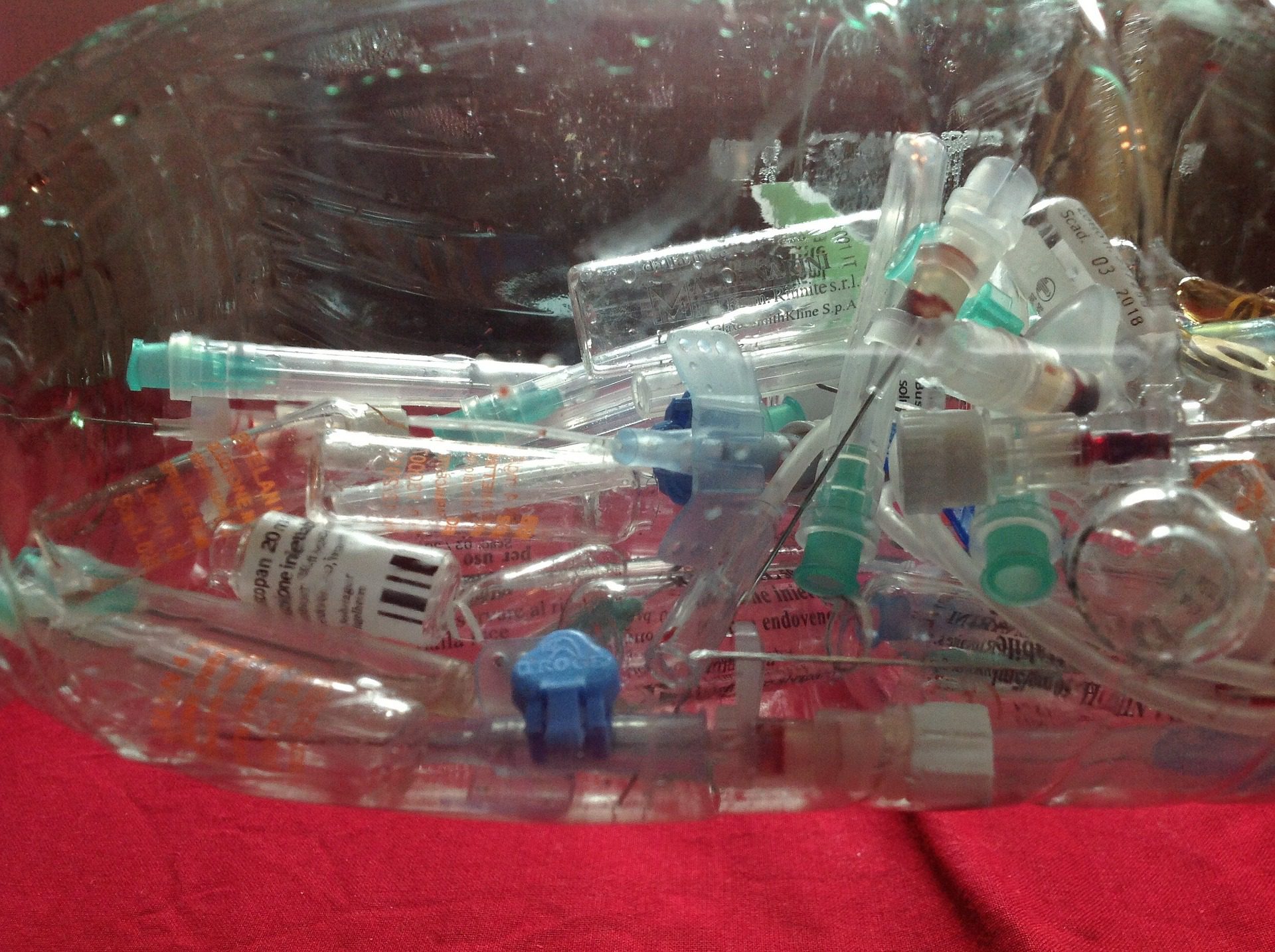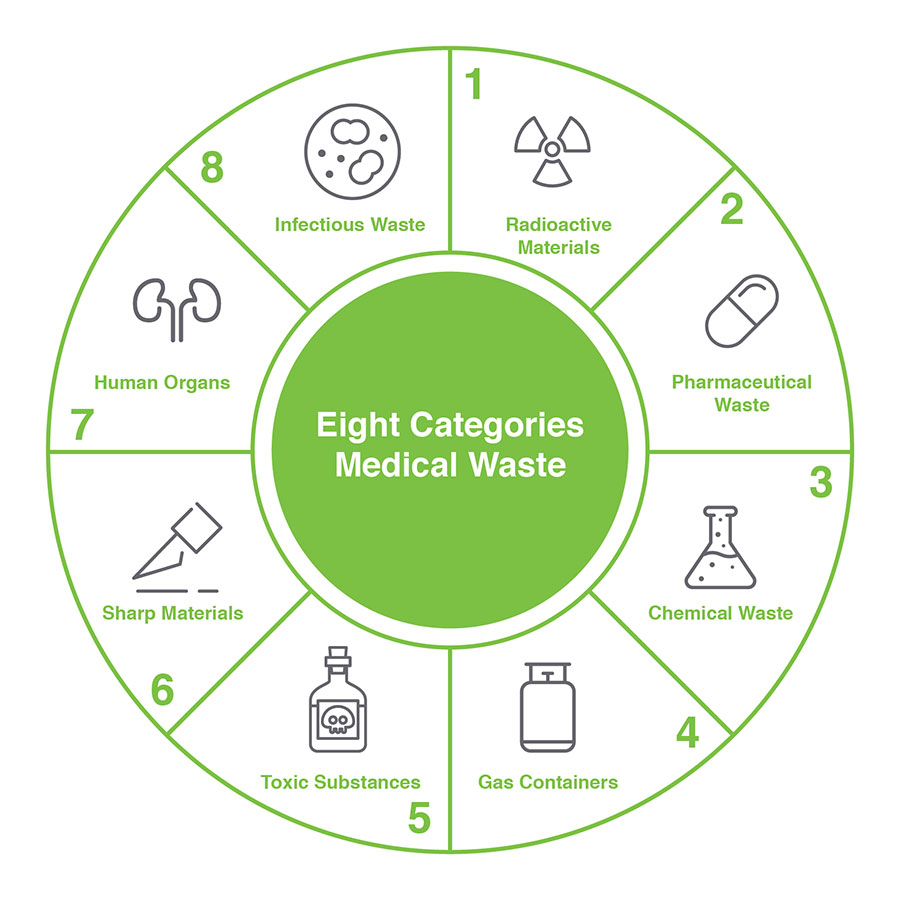Minimize Expenses and Optimize Security: Effective Medical Waste Disposal Techniques
Reliable medical waste disposal techniques are crucial for medical care centers to lessen prices and optimize safety. By executing appropriate partition and classification, efficient packaging and labeling, safe transport and handling, efficient therapy and disposal techniques, and conformity with regulatory guidelines, healthcare centers can make certain the accountable and secure management of clinical waste.

Appropriate Partition and Categorization
Appropriate segregation and categorization are important components of efficient clinical waste disposal strategies, guaranteeing the security of medical care workers, the public, and the atmosphere - medical waste removal services. medical waste disposal services with WasteX. By separating different sorts of clinical waste at the factor of generation, medical care centers can minimize the danger of cross-contamination and prospective harm to people and communities
One of the vital elements in proper partition is the recognition and category of medical waste. This entails categorizing waste right into different teams, such as infectious, hazardous, radioactive, or pharmaceutical waste. Each group calls for particular handling, storage, and disposal methods to avoid any kind of damaging results on human health and the setting.
Additionally, correct partition also consists of making use of color-coded tags and containers to clearly recognize and differentiate the different kinds of medical waste. This aids healthcare employees and waste monitoring personnel to quickly identify and take care of the waste properly. Red containers may be utilized for infectious waste, while yellow containers might be marked for hazardous waste.
Along with segregation, proper categorization likewise entails the proper product packaging and containment of clinical waste. This ensures that waste is firmly saved and carried without positioning any risks to people or the setting. Utilizing watertight and puncture-resistant containers, in addition to properly sealing and labeling them, helps to avoid any unintended exposure or release of dangerous substances.
Effective Product Packaging and Classifying
Efficient product packaging and labeling play a crucial role in guaranteeing the reliable and safe disposal of medical waste. Proper product packaging is vital to avoid leak, damage, or splilling throughout transport and handling. It assists to reduce the risk of contamination and protects health care employees, waste monitoring personnel, and the environment from potential risks.
Clinical waste needs to be packaged in watertight and durable containers that are resistant to puncture and breakage. These containers ought to be properly sealed to stop any kind of leak. In addition, the packaging should have the ability to withstand the problems of transportation, consisting of temperature variants and misuse.
Labeling is just as crucial as it provides critical details regarding the components of the waste and any kind of potential dangers related to it. The labels must consist of the name of the health care facility, the sort of waste, and any type of special delivery guidelines. Standardized and clear labeling guarantees that waste monitoring workers can conveniently identify and take care of the waste appropriately.
Efficient product packaging and labeling also help in the proper partition and categorization of clinical waste. Clear labeling permits very easy recognition of various waste streams, such as infectious waste, sharps, or pharmaceutical waste. This aids in improving the disposal procedure and guaranteeing that the waste is dealt with or gotten rid of according to governing guidelines.
Safe Transport and Handling
Guaranteeing the risk-free transport and handling of medical waste is of utmost link value in order to prevent any kind of prospective wellness and environmental dangers. Clinical waste, such as sharps, infected materials, and pharmaceutical waste, should be effectively packaged and handled to lessen the danger of direct exposure to hazardous compounds and virus.
Transporting medical waste needs conformity with rigorous regulations and guidelines set by ecological firms and local authorities. These policies aim to secure the health and wellness of employees involved in waste management and prevent the release of dangerous materials into the atmosphere.
To guarantee risk-free transport, medical waste must be put in puncture-resistant and leak-proof containers that are appropriately sealed and identified. These containers ought to be protected in such a way that avoids spills or breakage during transit (medical waste removal near me). In addition, it is critical to make use of specialized cars geared up with suitable safety attributes to move clinical waste. These automobiles ought to have sufficient ventilation and be made to stop leakage or contamination.
Taking care of medical waste likewise calls for proper training and adherence to security methods. Workers entailed in the handling of medical waste must wear proper individual protective devices (PPE) such as gowns, masks, and gloves to decrease the danger of direct exposure. They should also comply with stringent health techniques to avoid the spread of infections and guarantee the safe disposal of waste.
Effective Therapy and Disposal Approaches
Applying appropriate treatment and disposal methods is important in handling clinical waste efficiently and lessening prospective health and wellness and ecological dangers. Clinical waste, which consists of sharps, contagious products, chemicals, and pharmaceuticals, can position substantial dangers otherwise handled and taken care of appropriately. There are a number of treatment and disposal techniques available that stick to regulatory guidelines and advertise secure techniques.
One usual method is incineration, which includes burning the waste at heats. Incineration is reliable in damaging virus and reducing the volume of waste, but it can release damaging contaminants right into the air if not correctly managed. It is vital to utilize modern incinerators equipped with emission control technologies.
An additional approach is autoclaving, which makes use of heavy steam and pressure to sanitize the waste. Autoclaving works in killing microorganisms and decreasing the volume of waste, yet it calls for cautious tracking and maintenance to ensure correct performance. The decontaminated waste can after that be safely gotten rid of in a garbage dump.
Chemical treatment is an additional choice, which involves using anti-bacterials or other chemicals to neutralize virus. This approach is frequently used for fluid waste, such as lab specimens. Nonetheless, it is very important to utilize appropriate chemicals and adhere to appropriate procedures to guarantee effective therapy and avoid ecological contamination.

Compliance With Regulatory Guidelines
Sticking to look at this website regulative guidelines is necessary in guaranteeing correct compliance with medical garbage disposal practices. These standards are put in location to protect public health and wellness, protect against environmental contamination, and keep workplace security. Conformity with regulatory guidelines is vital for healthcare facilities, as non-compliance can cause penalties, fines, and reputational damages.
Governing guidelines lay out the appropriate handling, storage space, transportation, and disposal of clinical waste. These guidelines also attend to the partition of various waste streams, such as sharps, infectious waste, and pharmaceutical waste.
To preserve conformity, healthcare centers should develop comprehensive waste management programs that consist of team training, normal audits, and ongoing monitoring. It is necessary to keep up-to-date with any updates or changes to governing standards, as techniques might advance with time. By remaining notified and executing proper protocols, medical care centers can decrease the potential for regulatory offenses and secure the health and wellness of their staff, people, and the bordering community.
Verdict
In verdict, carrying out effective clinical garbage disposal techniques is crucial for decreasing expenses and optimizing read more security. Proper partition and categorization, effective product packaging and labeling, safe transport and handling, and efficient treatment and disposal techniques are important actions to guarantee conformity with regulatory standards. medical waste removal services. By adhering to these methods, healthcare centers can protect the atmosphere and public health while likewise lowering financial worries related to clinical waste monitoring
By executing correct segregation and classification, reliable packaging and labeling, risk-free transport and handling, effective treatment and disposal techniques, and conformity with regulatory guidelines, health care centers can guarantee the secure and responsible monitoring of clinical waste. Red containers may be utilized for contagious waste, while yellow containers might be marked for hazardous waste.
Clear and standard labeling makes sure that waste administration employees can easily identify and manage the waste suitably. (medical waste disposal services with WasteX)
Clear labeling permits for simple identification of different waste streams, such as infectious waste, sharps, or pharmaceutical waste. These standards likewise deal with the segregation of various waste streams, such as sharps, transmittable waste, and pharmaceutical waste.